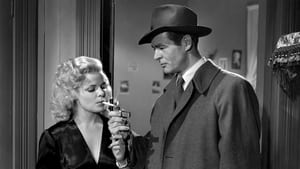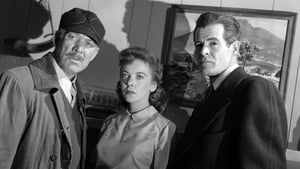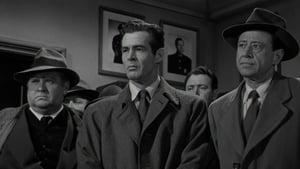Contact: [email protected]
Video Sources 0 Views

Synopsis
[ez-toc]




Introduction
In the vast landscape of old movies, few gems shine as brightly as “On Dangerous Ground Colorized,” a 1951 noir thriller directed by Nicholas Ray. As we embark on a journey through the annals of film history, this article explores the recent colorized version of this cinematic masterpiece, unlocking the secrets of its enduring appeal. The decision to add color to a black-and-white classic is not without controversy, and “On Dangerous Ground Colorized” becomes a compelling case study in the delicate balance between preserving cinematic authenticity and engaging modern audiences.
Read Media File Transfer Agreement: Terms and Conditions
Read FAQ
The Colorization Process in Films
Before we dive into the colorized world of “On Dangerous Ground Colorized,” let’s take a moment to understand the intricate process of colorization in films. This technique involves adding color to black-and-white footage through digital or manual methods. While some purists argue against altering the original artistic intent of classic films, colorization serves a crucial purpose in breathing new life into old masterpieces.
The pros and cons of colorizing black-and-white movies are fiercely debated. On one hand, it allows contemporary audiences to connect with classic films, breaking the temporal barrier that monochrome images often create. On the other hand, critics argue that colorization can compromise the artistic integrity of the original work, altering the director’s vision and diluting the essence of the era.
Case Study: Colorizing “On Dangerous Ground Colorized”
In the case of “On Dangerous Ground Colorized,” the decision to embrace colorization was a bold and controversial move. The film, initially shot in atmospheric black and white, starred Robert Ryan as Detective Jim Wilson and Ida Lupino as Mary Malden. The narrative weaves through the gritty world of crime and redemption, drawing viewers into a captivating story of suspense and moral complexity.
The colorized version of “On Dangerous Ground Colorized” introduces a new layer of visual richness to the film. Cinematographer George E. Diskant’s original black-and-white compositions are meticulously reimagined in vibrant hues, breathing fresh vitality into the stark landscapes and intense character interactions. The decision to colorize “On Dangerous Ground” reflects a commitment to preserving the film’s legacy while adapting it for a contemporary audience.
However, this choice has not been without controversy. Some argue that the black-and-white aesthetics are integral to the film’s noir atmosphere, and colorization may undermine its original impact. Nonetheless, proponents of colorization see it as a gateway for new generations to appreciate and connect with classic cinema.
The Most Inspiring Moments in the Colorized Version of “On Dangerous Ground Colorized”
Having explored the colorization process and the decision behind “On Dangerous Ground Colorized,” let’s now dive into the most inspiring moments that have been enhanced by this transformative technique.
Moment 1: Urban Grit in Color
The cityscape scenes in “On Dangerous Ground Colorized” are vividly brought to life with the addition of color. Dark alleyways and looming skyscrapers take on a new dimension, immersing viewers in the gritty urban setting that defines the film.
Moment 2: Tense Confrontations
The colorization process intensifies the emotional impact of key confrontations between Detective Jim Wilson and the characters he encounters. The subtleties of facial expressions and the nuances of each exchange are accentuated, heightening the overall tension and drama.
Moment 3: Natural Beauty in Contrast
The film’s rural sequences, originally captured in black and white, now showcase the natural beauty of the landscape in vivid color. Snowy expanses and serene wilderness become a visual feast, adding a layer of contrast to the film’s darker themes.
Moment 4: Ida Lupino’s Captivating Presence
In the colorized version, Ida Lupino’s performance as Mary Malden shines even brighter. Her expressive features and commanding screen presence are elevated, emphasizing the complexity of her character and enhancing the viewer’s connection to the narrative.
Moment 5: Climactic Resolutions
The film’s climactic moments, crucial to the resolution of the storyline, benefit immensely from colorization. The heightened visuals add an extra layer of suspense and emotional resonance, creating a truly immersive experience for the audience.
Preserving Cinematic History: Restoration Efforts for “On Dangerous Ground Colorized”
Beyond the colorization debate, the restoration of films like “On Dangerous Ground” plays a vital role in preserving cinematic history. As the reels of classic movies age, they face the risk of deterioration, and the task of restoration becomes a race against time.
The restoration efforts for “On Dangerous Ground” go beyond colorization. They involve meticulous digital remastering, audio enhancements, and the careful preservation of the film’s original elements. This commitment ensures that future generations can experience the film in its truest form, appreciating the craftsmanship of the filmmakers who paved the way for modern cinema.
In an era where streaming services and digital platforms dominate, the importance of preserving classic films cannot be overstated. “On Dangerous Ground,” with its colorized version and restored quality, becomes a beacon in this ongoing effort to bridge the gap between the past and the present.
Conclusion
As we conclude our exploration of “On Dangerous Ground Colorized 1951,” it’s evident that this cinematic transformation has sparked both admiration and controversy. The decision to add color to a classic noir film opens a dialogue about the delicate balance between preservation and adaptation. The colorization process, with its pros and cons, breathes new life into the film for a contemporary audience while posing questions about the preservation of artistic intent.
In the grand tapestry of colorized film history, “On Dangerous Ground” stands as a testament to the enduring power of storytelling and the evolving nature of cinematic art. Whether you embrace the vibrancy of the colorized version or prefer the timeless allure of black and white, this classic remains a captivating journey through the shadowy realms of crime and redemption. As we navigate the ever-changing landscape of film preservation, “On Dangerous Ground” serves as a reminder of the importance of cherishing our cinematic heritage, ensuring that the magic of old films continues to captivate audiences for generations to come.













